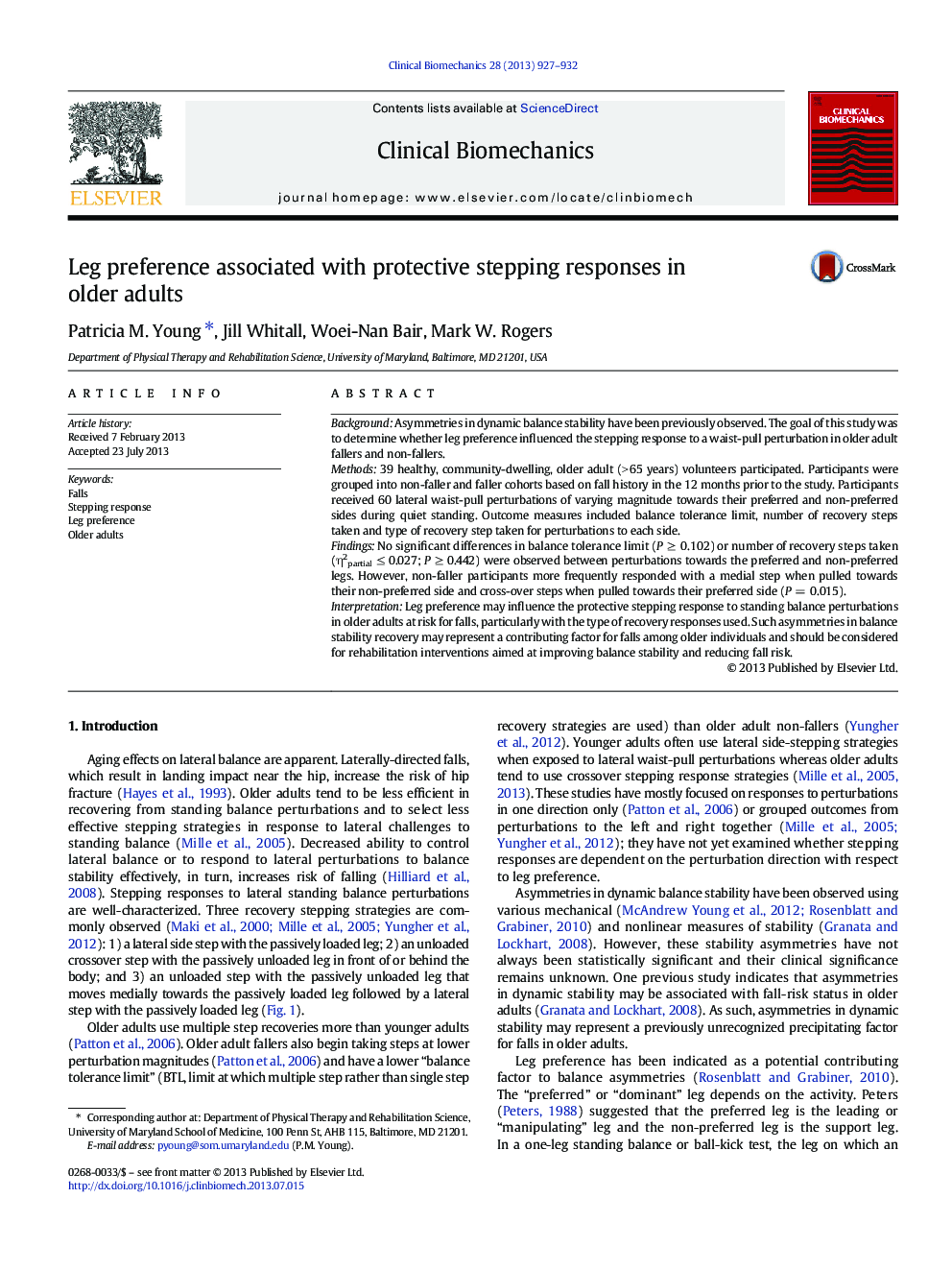| Article ID | Journal | Published Year | Pages | File Type |
|---|---|---|---|---|
| 6205117 | Clinical Biomechanics | 2013 | 6 Pages |
BackgroundAsymmetries in dynamic balance stability have been previously observed. The goal of this study was to determine whether leg preference influenced the stepping response to a waist-pull perturbation in older adult fallers and non-fallers.Methods39 healthy, community-dwelling, older adult (> 65 years) volunteers participated. Participants were grouped into non-faller and faller cohorts based on fall history in the 12 months prior to the study. Participants received 60 lateral waist-pull perturbations of varying magnitude towards their preferred and non-preferred sides during quiet standing. Outcome measures included balance tolerance limit, number of recovery steps taken and type of recovery step taken for perturbations to each side.FindingsNo significant differences in balance tolerance limit (P â¥Â 0.102) or number of recovery steps taken (η2partial â¤Â 0.027; P â¥Â 0.442) were observed between perturbations towards the preferred and non-preferred legs. However, non-faller participants more frequently responded with a medial step when pulled towards their non-preferred side and cross-over steps when pulled towards their preferred side (P = 0.015).InterpretationLeg preference may influence the protective stepping response to standing balance perturbations in older adults at risk for falls, particularly with the type of recovery responses used. Such asymmetries in balance stability recovery may represent a contributing factor for falls among older individuals and should be considered for rehabilitation interventions aimed at improving balance stability and reducing fall risk.
